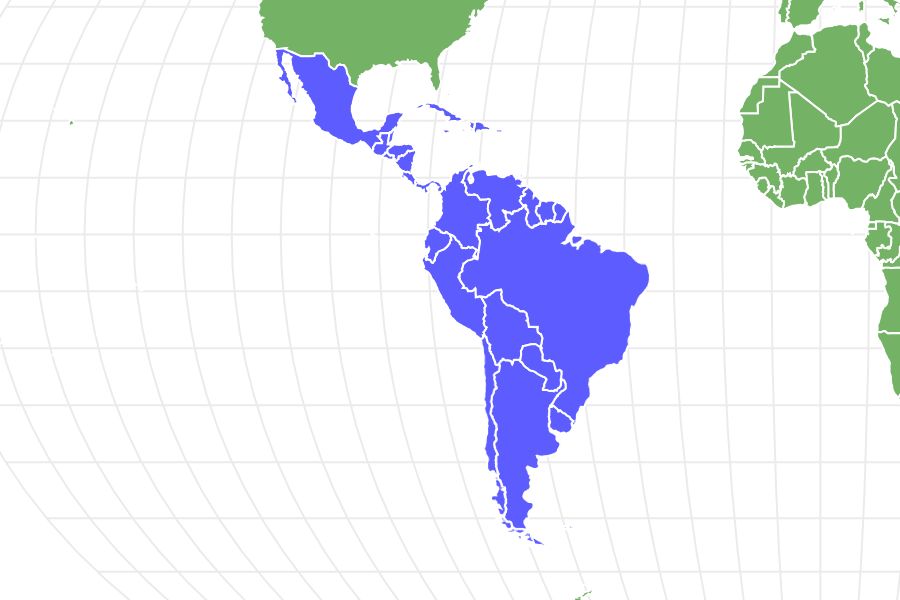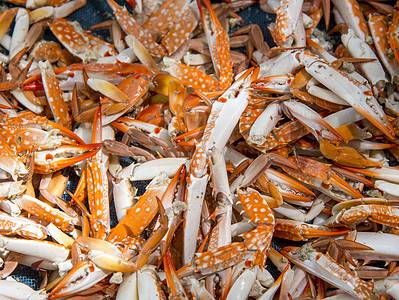Harpy Eagle
Harpia harpyja
One of the largest eagle species in the world!
Advertisement
Harpy Eagle Scientific Classification
- Kingdom
- Animalia
- Phylum
- Chordata
- Class
- Aves
- Order
- Accipitriformes
- Family
- Accipitridae
- Genus
- Harpia
- Scientific Name
- Harpia harpyja
Read our Complete Guide to Classification of Animals.
Harpy Eagle Conservation Status
Harpy Eagle Facts
- Name Of Young
- Chicks or hatchlings
- Group Behavior
- Small families
- Fun Fact
- One of the largest eagle species in the world!
- Estimated Population Size
- Unknown
- Most Distinctive Feature
- Crown of feathers
- Other Name(s)
- American Harpy Eagle
- Wingspan
- 2m (6.5ft)
- Habitat
- Lowland rainforests
- Predators
- Other harpy eagles
- Diet
- Carnivore
- Favorite Food
- Sloths, monkeys, lizards, rodents, small deer, and birds
- Common Name
- Harpy Eagle
- Location
- Central and South America
- Slogan
- Talon's the size of a grizzly bear's claws!
- Group
- Birds
View all of the Harpy Eagle images!
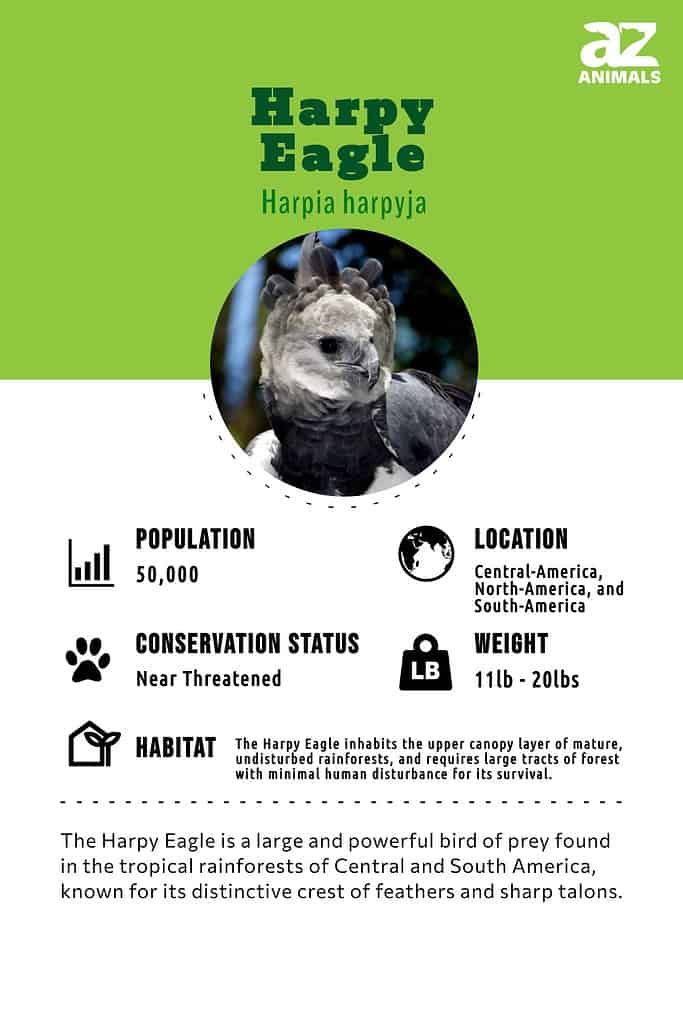
The harpy eagle is a fearsome predator, a loyal partner, and a nurturing parent.
Residing deep within the rainforests of the Western Hemisphere, the harpy eagle cuts a striking figure. With its black and white colors, the regal crown of feathers, and its long, elegant tail, this species provides an unmistakable sight in its native habitat.
Despite decreasing population numbers, it is currently widespread throughout a wide swath of territory around the southern Americas. However, continued habitat loss and hunting may put it at risk of permanent extinction.
5 Amazing Harpy Eagle Facts
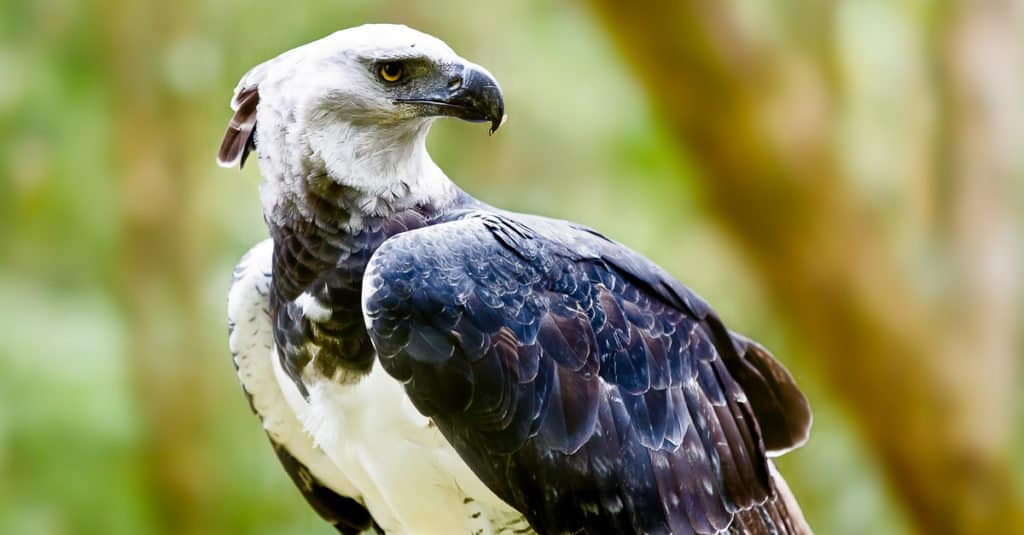
The majestic Harpy Eagle can live up to 35 years in the wild.
©MarcusVDT/Shutterstock.com
- The harpy eagle is an important cultural symbol of some Latin American countries. It has even been adopted as the national bird of Panama.
- The species is named after a creature from Greek mythology that was half-human and half-bird.
- The harpy eagle has the biggest talons of any eagle species. They are about 3 to 4 inches long, or about the same size as a grizzly bear’s claws. This allows them to lift large prey clear of the ground.
- It can manually raise its iconic feather crown when threatened.
- The harpy eagle is a bird with extraordinary visual senses that it can use to locate small prey from hundreds of feet away.
You can check out more incredible facts about harpy eagles.
Additionally, the American and Papuan harpy eagles are the two varieties of harpy eagles.
Evolution and Origins
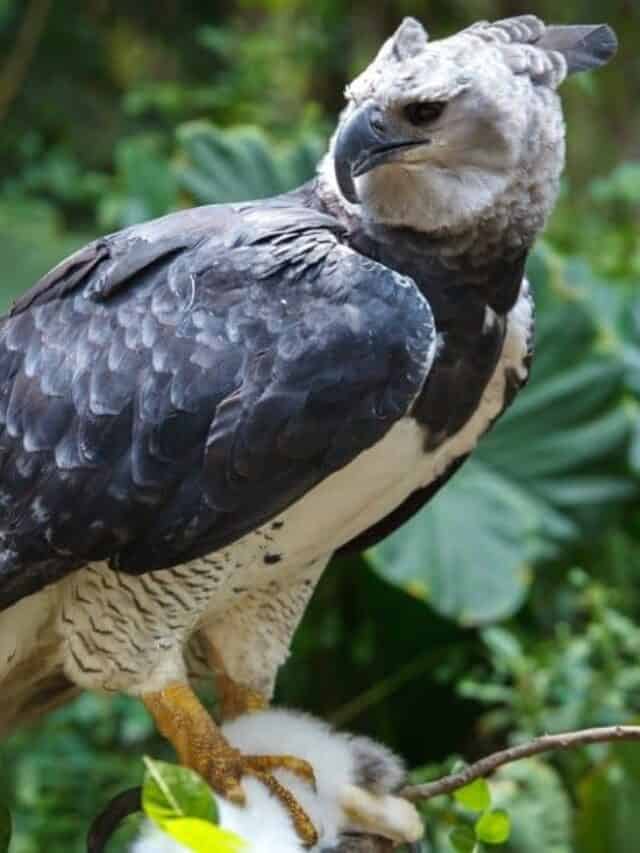
The Harpy Eagle is the most powerful bird of prey in the world.
©Chepe Nicoli/Shutterstock.com
In what way did harpy eagles develop? The unique evolution of the harpy eagle, not much is known. At 50–60 million years ago, the ancestors of the animal most likely arrived on the American continent. They diverged from related species many million years ago.
It is a native of Central and South America and got its name from the horrific ladies with bird bodies known as the Harpies in Greek mythology. The harpy has long been regarded as a sacred being by people all over the Americas. Harpies, who are the top predators in their food chain, eat sloths, opossums, and monkeys.
Harpy eagles catch and consume their prey with the aid of several adaptations. They have a fantastic vision. They can see objects less than an inch in size from approximately 220 yards away. They can fly at up to 50 mph, allowing them to quickly swerve through the woods and pounce on their huge prey.
Scientific Name
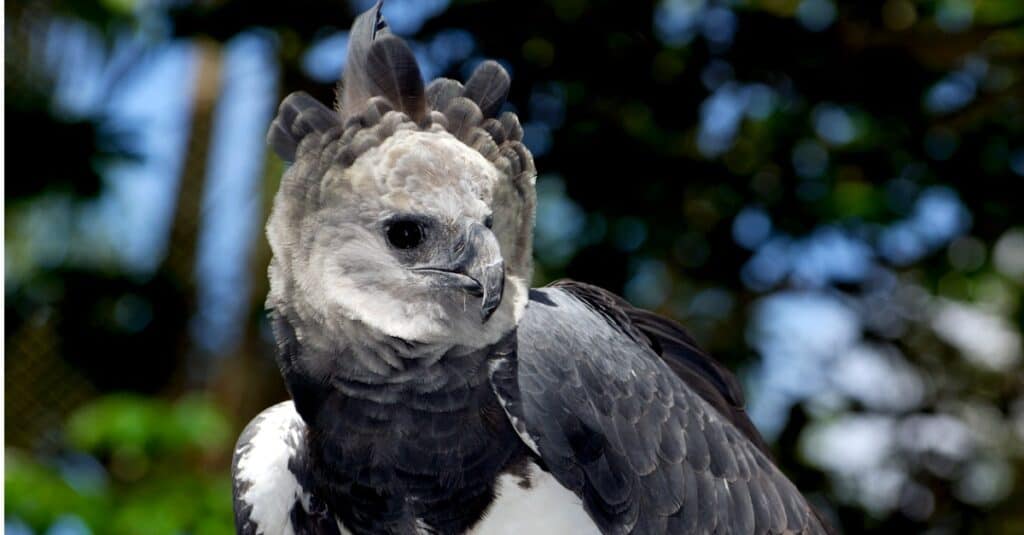
With talons that can extend up to six inches, the harpy eagle can catch prey as large as sloths and monkeys.
©Alfredo Maiquez/Shutterstock.com
The scientific name of the harpy eagle is Harpia harpyja. Alternate names for this species include the American harpy eagle and the royal hawk. The species is named after the half-human and half-bird creatures of ancient Greek mythology, perhaps because it provided such a unique sight to biologists and explorers.
The harpy eagle is the only living member of the genus Harpia. It is most closely related to the crested eagle (whose territory partially overlaps) and the New Guinea harpy eagle. More distantly, it is part of the same family of the Accipitridae, including the hawks, kites, harriers, vultures, and other eagles.
Appearance and Behavior
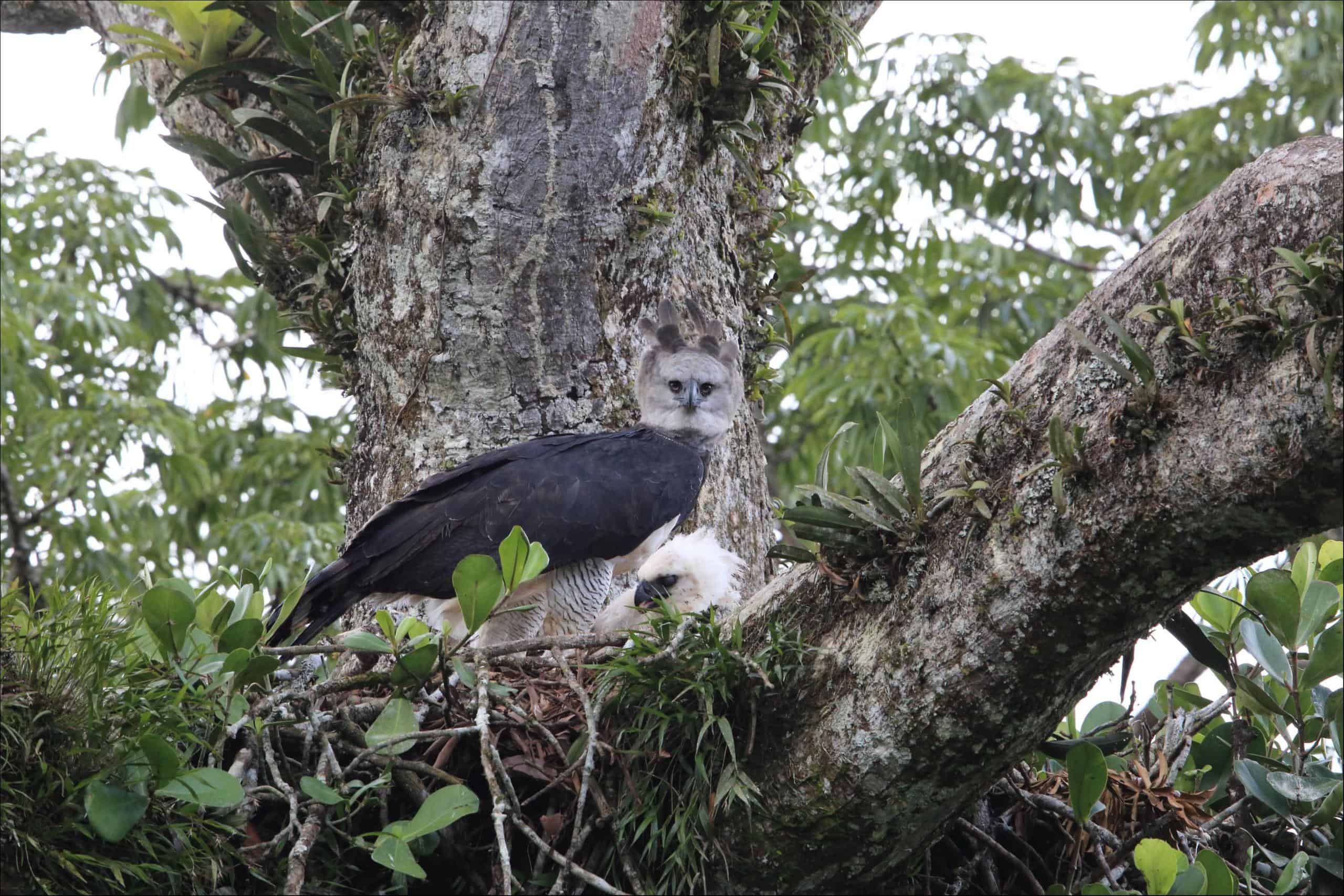
Harpy eagles are birds that are easily recognized by their distinctive coloration, including gray heads, white undersides, black back, wings, and breasts. The legs are largely white in color with black stripes. The beak, eyes, and talons are also black or reddish in color, while their feet are yellow. The top of the head contains a rich crown of long black features that it can manually raise when threatened. Some scientists also believe that the crown feathers may help direct sound to the bird’s ears.
The harpy eagle is among the largest species of eagle in the world. An individual can measure up to 40 inches and weigh up to 20 pounds — or about the size of a medium dog. Females are quite a bit heavier than males, but otherwise, there is little physical difference between the sexes.
Harpy eagles are extremely skilled hunters with sharp eyesight and the ability to carefully maneuver through dense forests with their wings. Their remarkable eyesight allows them to see prey less than an inch large from about 650 feet away. They also have good hearing to make up for their relatively poor sense of smell. Harpy eagles can achieve top speeds of around 50 mph for short periods of time, but pure speed is not their forte. Their long tail feathers have evolved primarily to help them steer and navigate around trees and vegetation.
Harpy eagles are solitary creatures that prefer to hunt alone or with a breeding partner. Sometimes a growing juvenile will assist as well. They can attack prey from either above or below, preferring to strike quickly before the victim is aware of their presence. Harpy eagles communicate with each other through a limited range of different vocalizations and visual displays, including whistles, clicks, and croaks. They tend to be more vocal around the nest and almost completely silent during hunts.
Habitat

©Beker Yepez/Shutterstock.com
The harpy eagle prefers to inhabit the upper canopy layers of dense lowland tropical rainforests in the Western Hemisphere. It will also traverse open plains or sparse forests in search of food. This species has a sparse and discontinuous range in Mexico and Central America.
Its main range stretches across almost all of Brazil and some surrounding countries such as Venezuela, Colombia, Bolivia, and Peru (minus the mountainous regions of the Andes). Harpy eagles build nests 90 to 140 feet above the ground primarily in kapok or silk-cotton trees where the young chicks are safe from almost all potential predators except for other birds.
Diet

©feathercollector/Shutterstock.com
The diet of the harpy eagle largely consists of sloths and monkeys — including capuchins, howler monkeys, and spider monkeys — perhaps because these animals are easier to spot from a perch in the trees. They can also supplement their diet with lizards, rodents, small deer, and other birds.
Their remarkably long and sharp talons enable them to quickly subdue and kill prey by exerting enormous pressure of several hundred pounds at a time. They can also snatch a victim weighing up to 17 pounds straight off the ground in a single diving motion and carry it in the air for short distances. If the prey is too heavy to carry, then the eagle will partially eat it before returning to the nest.
These patient hunters can remain perched at the same location for up to a full day while waiting for prey to appear. This species can afford to be this patient. It can go up to a week before needing to feed again. And when it does make a kill, it can feast on the remains for a few days at a time. Harpies play an important role in controlling local prey populations, which could threaten other species if left unchecked.
Predators and Threats
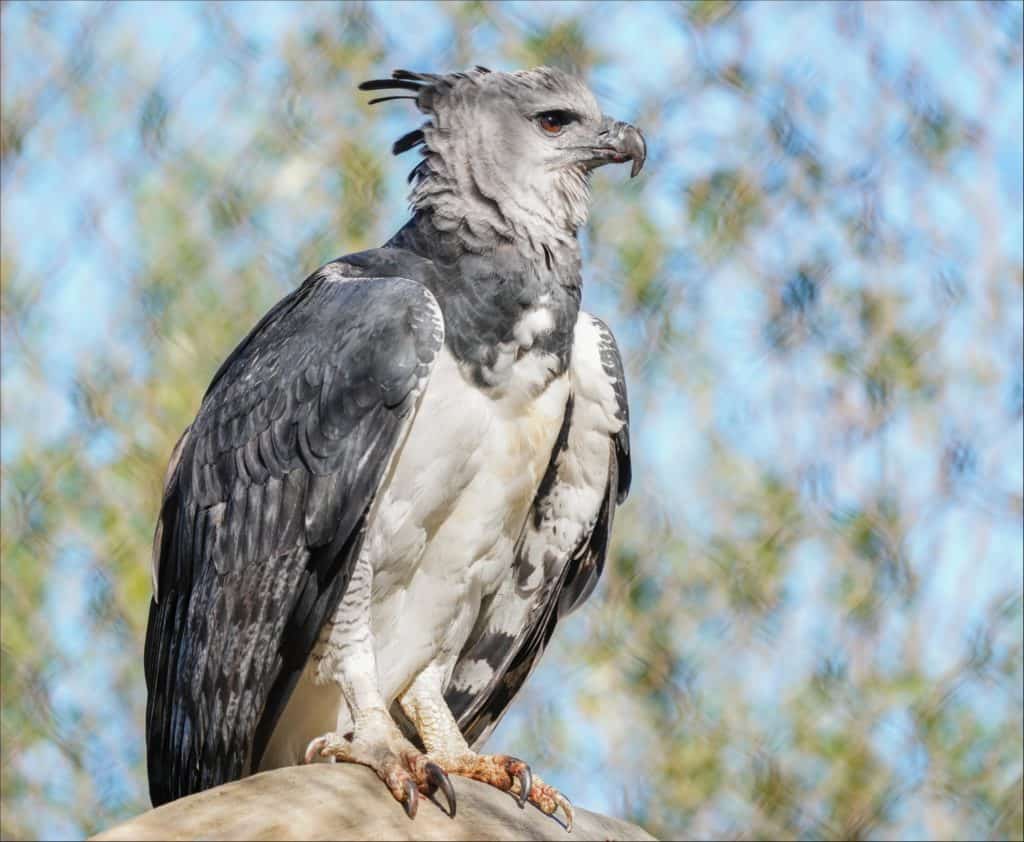
©TIKO IGITYAN/Shutterstock.com
A full-grown adult harpy eagle is an apex predator that has few other natural threats in the wild. Young chicks, on the other hand, are almost entirely defenseless and may make a tempting target for other birds of prey.
That is why one of the parents must remain constantly vigilant in defense of the nest at all times of the day. The sheer height of the nest above the ground provides an almost impregnable defense against large cats and other terrestrial predators.
The greatest threat to the continued survival of the harpy eagle remains the destruction of the tropical rainforests from logging and agriculture. Given the amount of space required for its natural hunting territory, this species is particularly vulnerable to habitat loss.
Harpy eagles may also fall victim to a hunter or local farmer, who may consider them pests or easy targets (even though they only rarely feed on domestic livestock).
Reproduction, Babies, and Lifespan
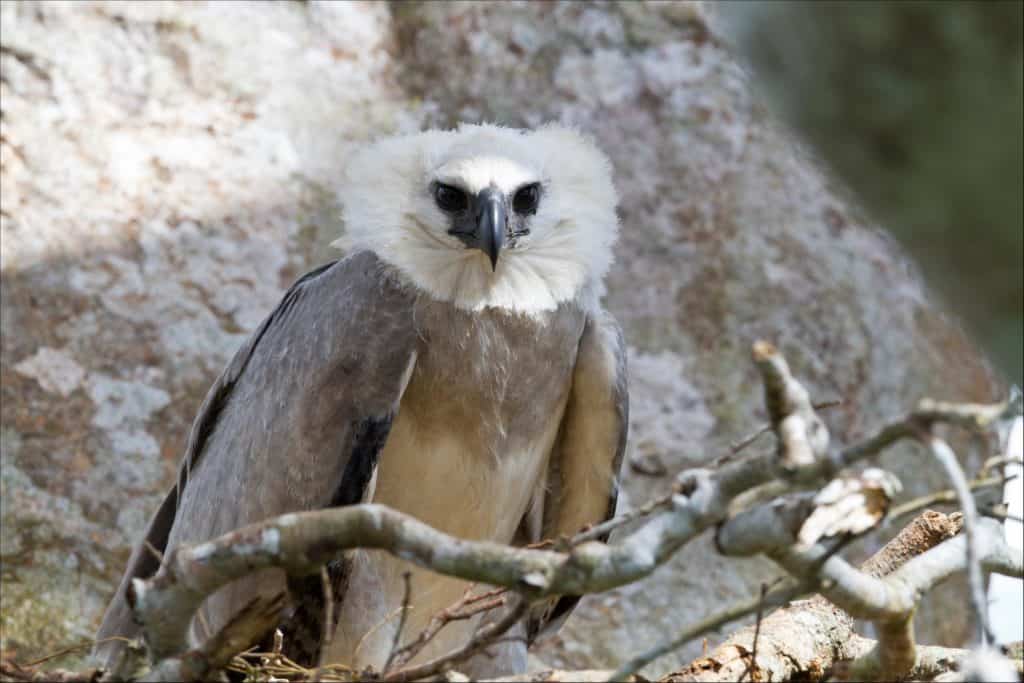
©Jeff Cremer/Shutterstock.com
Harpy eagles are a monogamous species that appear to form lifelong bonds with their chosen mates. Their highly intimate displays of affection — including their habit of chirping at each other or rubbing their bills together. It is believed this may serve to promote a deeper bond between the couple. Together they share or split many of the duties of a married pair.
One of the most important tasks is the construction of a nest consisting of sticks, vegetation, and animal fur about five feet in diameter. Some pairs may use multiple nests throughout the years, but most pairs will prefer to reuse the same nest every year and constantly repair and rebuild it as needed.
The mating season begins with the rainy season around April or May. At some point, during this period the pair will choose to mate several times over the course of a few days. After mating, the female will typically lay two eggs at a time but raise only a single chick. If two chicks hatch, then the parents will usually leave the second one to starve.
If the first chick dies, however, then there is a good chance the second one will survive. It takes nearly two months to fully incubate an egg. The female takes on the majority of the incubation duty, while the male mostly searches for food.
The newborn chick will remain all-white for the first part of its life. After six or seven months, the chick will become fully-fledged and acquire all of its feathers. Both parents will continue to take care of the chick for the first 10 months of its life. But even after they learn to fend for themselves, the young birds may remain near their original nest for quite some time. Due to the long development time of the chick, the female only lays eggs once every two or three years.
It usually takes around three years to achieve full adult coloration. After four or five years, the eagle will finally reach full maturity and usually stay within the area of their birth. A harpy eagle can live anywhere between 25 and 35 years in the wild.
Population
The International Union for the Conservation of Nature (IUCN) Red List, which ranks the conservation status of many species on the planet, currently lists the harpy eagle as near threatened.
The population numbers, though not precisely estimated, appear to be decreasing throughout much of Central America. The species remains more robust in the interior and more remote parts of Brazil — though less common near the coasts. One study suggests there are less than 50,000 individuals remaining in the wild.
The continued loss and degradation of the Brazilian Amazon for human development could put the species under greater pressure in its main range. In a 50-year span, the species may have already lost up to half of its natural habitat.
Experts worry that at some point the loss of the Amazon may become irreversible. And given the immense amount of effort required to raise a single chick, numbers may be slow to recover again once they start decreasing.
Efforts are underway by many conservation organizations such as the Peregrine Fund to prevent the further loss of population numbers and reintroduce the species into its former habitat. In order to bolster harpy eagle numbers, however, local governments will need to make greater strides in the preservation of the remaining rainforest habitat from further destruction. They will also need to restore what’s been already lost.
FAQ
How big is a harpy eagle?
Harpy eagles can measure anywhere between 35 and 40 inches long with a wingspan of around six feet. There is some variability in the size difference between individuals and even the sexes. Whereas males can weigh anywhere between 11 and 17 pounds on average, females can weigh between 15 and 20 pounds on average.
What does a harpy eagle eat – are they carnivores, herbivores, or omnivores??
Harpy eagles primarily feed on sloths and monkeys and less commonly, rodents, deer, and other birds. Thanks to its sharp eyesight and remarkable flight ability, the animal can spot potential prey in the canopy and snatch it right out of a tree with its talons.
Where do harpy eagles live?
The harpy eagle lives in the lowland tropical forests throughout Central and South America. Its range extends in a somewhat uneven distribution from southern Mexico to northern Argentina.
How did the harpy eagles evolve?
Not a whole lot is understood about the evolution of the harpy eagle, specifically. The ancestors of the species probably reached the American continent around 50 to 60 million years ago. They split off from similar species a few million years ago.
View all 104 animals that start with HHarpy Eagle FAQs (Frequently Asked Questions)
Are Harpy Eagles herbivores, carnivores, or omnivores?
Harpy Eagles are Carnivores, meaning they eat other animals.
What Kingdom do Harpy Eagles belong to?
Harpy Eagles belong to the Kingdom Animalia.
What is the lifespan of a Harpy Eagle?
Harpy Eagles can live for 25 to 35 years in the wild.
What is the Harpy Eagle's wingspan?
The Harpy Eagle has a wingspan of 2m (6.5ft).
What is another name for the Harpy Eagle?
The Harpy Eagle is also called the American harpy eagle.
How many Harpy Eagles are left in the world?
The population size of the Harpy Eagle is unknown.
How fast is a Harpy Eagle?
A Harpy Eagle can travel at speeds of up to 50 miles per hour.
What are the differences between harpy eagle and bald eagle?
The key differences between the harpy eagle and the bald eagle are their size, appearance, wingspan, habitat, diet, and conservation status.
What are the differences between harpy eagle and Philippine eagle?
The key differences between a harpy eagle and a Philippine eagle are size, appearance, habitat, conservation status, and behavior.
Thank you for reading! Have some feedback for us? Contact the AZ Animals editorial team.

